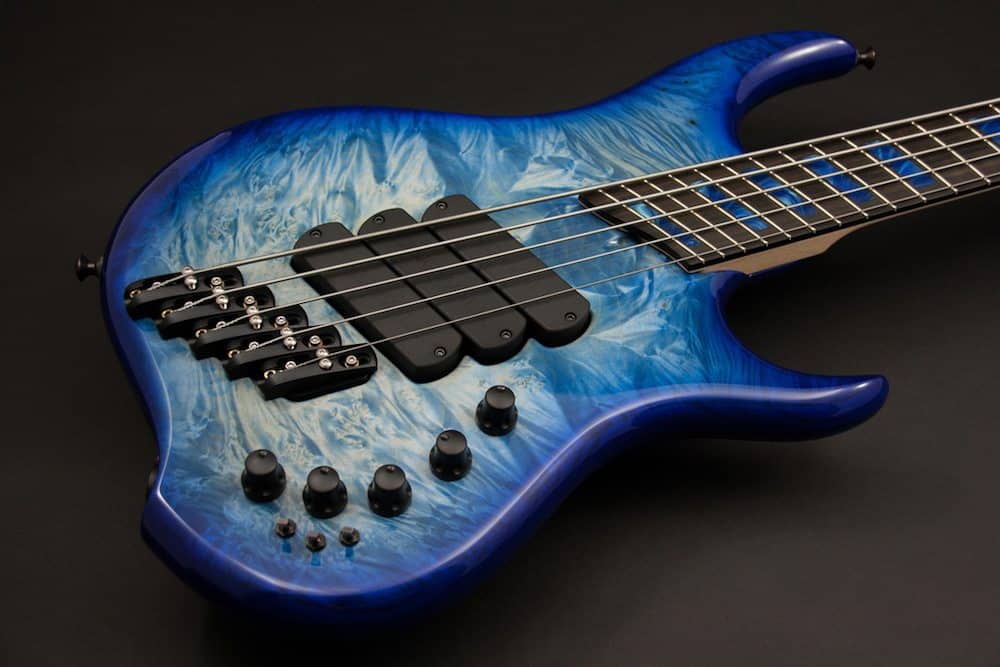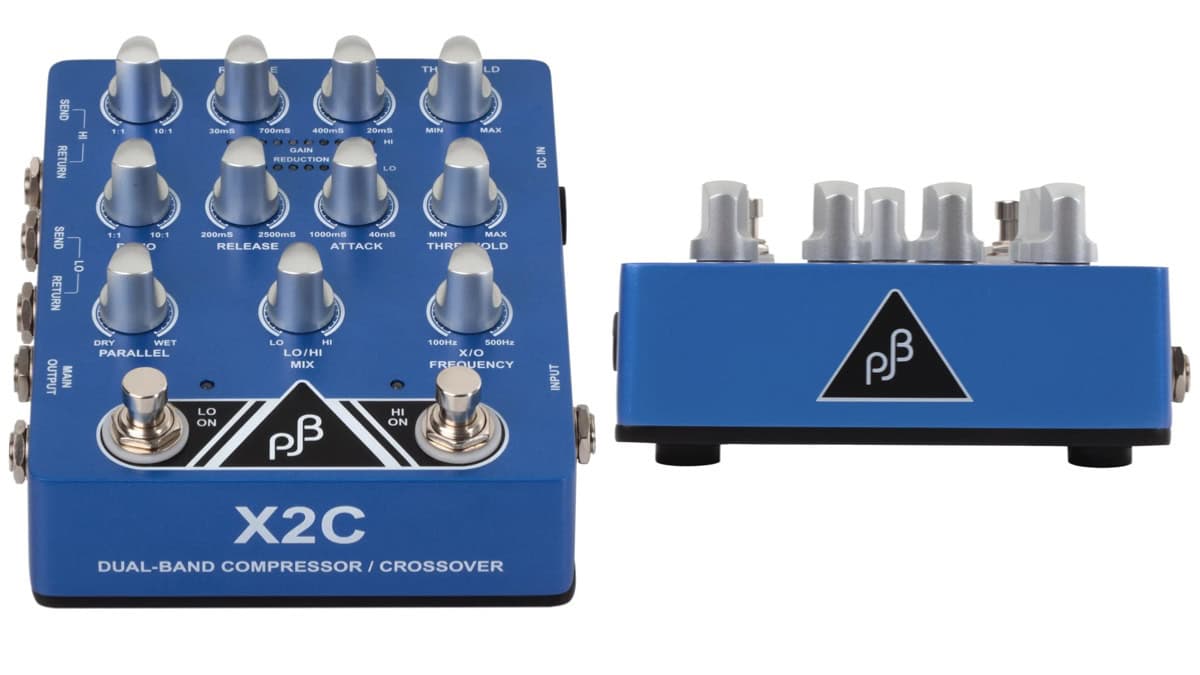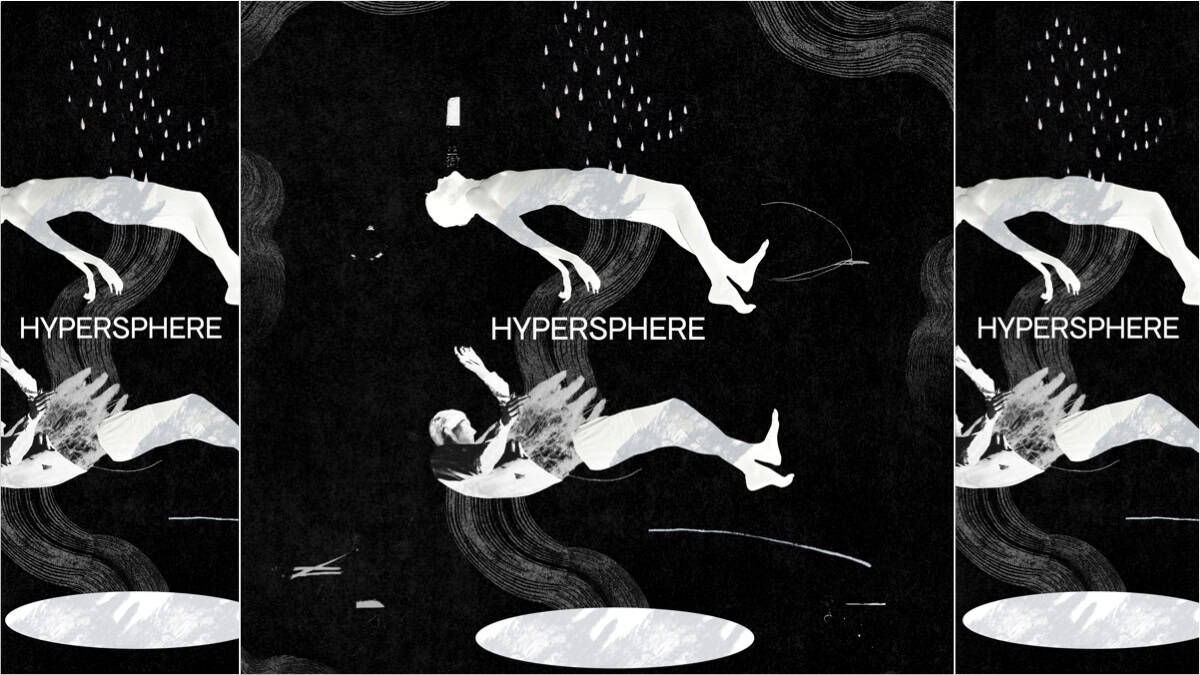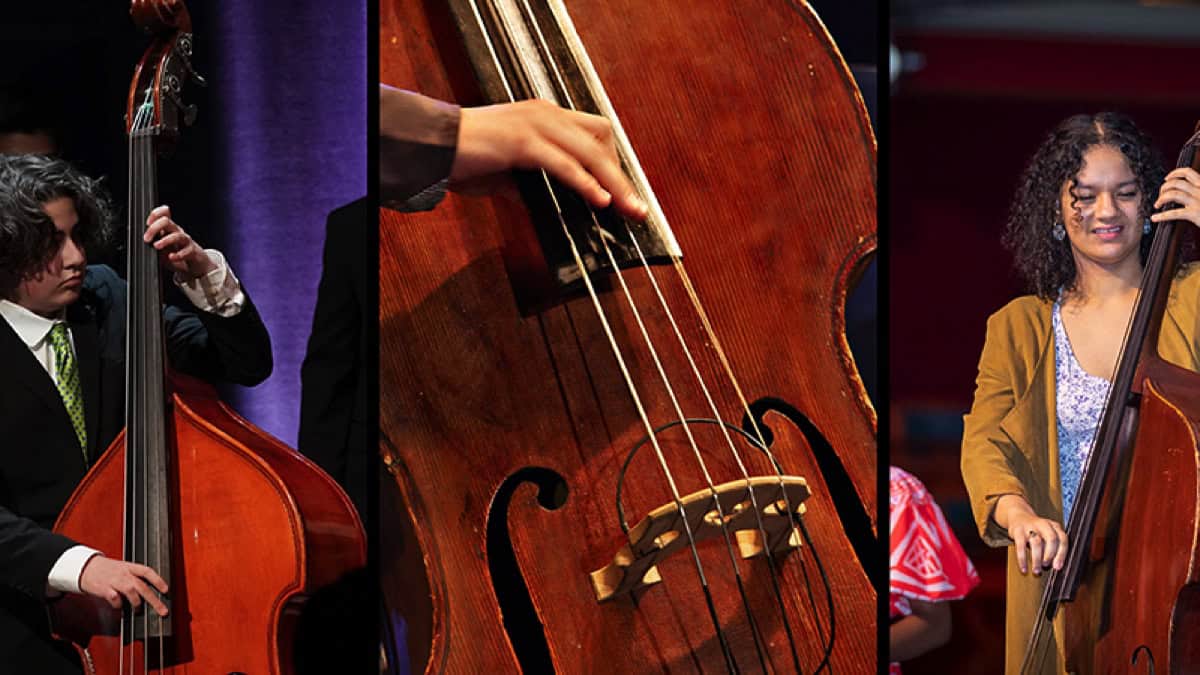Latest
Bass Musician Magazine’s Year of the Luthier – Sheldon Dingwall


Z 3x 5 bleached dyed Natural to Indigo burlburst body
Bass Musician Magazine’s Year of the Luthier – Sheldon Dingwall…
How did you get your start in music?
I came from a musical household. I started baritone ukulele at 4, piano lessons at 5, drum lessons at 9, guitar lessons at 12 and bass lessons at about 16. I taught drums and guitar from 16 to 20.
Are you still an active player?
No time right now but when my kids get older, I may look for a local gig.

ABI 3x Charcoal burst over Maple Burl body
How did you get started as a Luthier?
My uncle Alfred Wilson built acoustic guitars as a hobby. I coaxed him into teaching me. I started by designing and building a locking tremolo bridge then moved on to necks and bodies.
When did you build your first bass?
I’d built custom bass necks and bodies for local musicians in the late 80s and early 90s. The first complete bass I built was the prototype for the original Voodoo Bass that evolved into our current Z-series. That was completed at 7:30 AM on January 13th 1993.

How did you learn the art of woodworking/Luthier?
My uncle taught me the basics of woodworking, metalworking and finishing. I don’t know why but several of the local woodworking elite took me under their wing and guided me in the early days. I did a ton of reading and was thoroughly obsessed with the subject.
Woodworking is something that comes pretty naturally to me so I caught on fast. I started a repair business to create a job and to learn from the mistakes of other manufacturers. The repair business took off and I learned a lot about building and built up a customer base.
Who would you consider a Mentor?
My uncle for sure, Glenn McDougall from Fury Guitar has been my most important mentor. He’s shared a ton of his knowledge and even had a hand in helping me rebuild after the fire that wiped out my shop. Tom Anderson’s been a good friend and mentor too.

How do you select the woods you choose to build with?
I have a guy on staff to takes care of all that now. His name is Joey Lorer. He’s a brilliant guy and a real wood nerd. We have trusted suppliers that we’ve worked with for over 20 years. They know what we want and we always get the top quality.
How about pickups?
We’ve been making our own pickups since 2000. We used to supply other builders but we pretty much handed that business over to Nordstrand. I’m the type that needs to focus on one thing at a time. Running a bass business and a pickup business stretched our resources too thin.
What pickups did you use in the past?
We worked with Bartolini from 1993 to 2000. They’ve always made great pickups and electronics. It was not an easy decision to go out on our own but it was something I felt we needed to do to grow.
What electronics do you use right now?
We use custom modified pre-amps from Glockenklang and also work closely with Darkglass with their Tone Capsule.
Who were some of the first well-known musicians who started playing your basses?
Lee Sklar was the first big name endorser. He’s as well known as you can get in the bass world. Other A-list players in the early days were Mike Brignardello, Michael Rhodes and Jason Newstead.

Lee Sklar Dark Candy Green
How do you develop a signature or custom bass for an artist?
We only have two signature models. The Lee Sklar model and the Adam Nolly Getgood NG2. With Lee, we sent him the latest version of the bass he was playing at the time. We asked him for his input and added the features he wanted like mandolin frets, easier access to the control cavity and a specially wired switch.
Adam owned 3 of our basses and wanted to create something new by combining a hot rodded version of our Combustion bass and a custom pre-amp from Darkglass. Adam, Doug from Darkglass and I sat around the breakfast and supper table and pounded out ideas until the concept of the Tone Capsule evolved. Adam liked the race car inspired finishes we were doing and wanted to take his sig model in a more European exotic direction with a carbon fibre pick guard.

SP5 pj Faded Bluejean Matte Black PG maple wenge black hardware
What are a few things that you are proud about your instruments and that you would consider unique in your instruments?
I like companies and designers that innovate so I’m most proud of the innovations and in-house designed parts. We didn’t invent Fanned-frets, that was Ralph Novak. But we were the first company other than Ralph to base our entire company on them. We were pioneers in using Neodymium magnets in pickups, we innovated the magnetic battery compartment and innovated the dual-density body construction. We designed our bridges, pickups and control knobs.
Which one of the basses that you build is your favorite one?
They are all like children. They are all favourites for different reasons.

Can you give us a word of advice to young Luthiers who are just starting out?
Be patient, any career in the arts will take a long time to make a living at and a longer time to master. Be fearless.
What advice would you give a young musician trying to find his perfect bass?
Play as many as you can. Ask a seasoned repair tech to check them over. Make sure you’re buying something that’s solid and reliable.
What is biggest success for you and for your company?
Almost every day we get an email or are tagged in a Facebook post from a happy customer that is thrilled with their new bass. That’s our biggest success. Being able to affect people with our work. That’s what every artist strives for.

PA5 quilt body
Are you preparing something new, some new model or new design?
We recently released a prototype of a Thunderbird. We took a different approach and it seems to have struck a nerve. The response has been incredible. We’ll be brining out a 6-string version of the NG2 next year. The rest of our developments are too far out in the future to discuss at this point.
Or maybe some new gear amps, etc.
We’re working on new pickups and new models. Other than the D-bird and NG2 6-string though, I can’t release any details.
What are your future plans?
Continue growing the company. Continue bringing out innovative designs and refining the existing ones.
Gear News
New Gear: Phil Jones Bass X2C Duel Compressor/Effects Loop

Step Into X2C With Phil Jones Bass Duel Compressor/Effects Loop…
Phil Jones Bass latest pedal innovation is the X2C Dual Compressor with Dual Effects Loop for performance and recording. The X2C incorporates advanced compressor circuit technology and provides comprehensive tone control with a dual crossover feature which divides the signal into frequency bands ranging from 100Hz to 500Hz, ensuring exceptional clarity and dynamics in tone refinement.
With insert jacks on each band, the X2C unlocks limitless creativity, enabling players to use various FX pedals for custom tone sculpting. Additionally, it functions as an electronic crossover, ideal for driving high-performance, 2-way bass rigs.
PJB’s Dual-Band compression design is more flexible than standard single-band compressors and provides a more natural and transparent sound. It also provides greater control over shaping and managing dynamics where standard compressors affect the entire frequency spectrum of an audio signal.
PJB’s dual compressor enables the player to shape specific frequency ranges of an audio signal which allows for compressing the low frequencies while preserving the high frequencies, or vice-versa. Treating the low-end with a dedicated band also allows for heavy compression without affecting the midrange frequencies, which carry the attack of the sound.
Effects can be plugged into the insert jacks on the X2C and controlled separately. As an example, the lows can be adjusted separately for an overdrive pedal while the highs can be controlled for a chorus.
Dividing the audio spectrum into fundamental frequencies and harmonics is also effective in the enrichment of slapping techniques. The low frequencies can be compressed without changing the dynamics of the “slap”. By controlling the low frequencies and focusing the attack on the slap the amplifier will sound louder while avoiding overloading of the amp or speakers. The low band can be compressed without the harmonics being affected. In addition, the send jacks can go to different amplifiers/speakers for a bi-amplification set up.
Compact and potent, the X2C embodies studio-grade excellence, setting a new standard for dynamic processing in an uncompromising, portable pedal. The street price is $359.99.
Visit online at www.pjbworld.com
Bass CDs
New Album: CATTANEO, Tim Lefebvre, Andrea Lombardini, Hypersphere

CATTANEO, TIM LEFEBVRE AND ANDREA LOMBARDINI PRESENT ‘HYPERSPHERE’ EP
The members of Buñuel, David Bowie’s band and a prominent electronic artist are united and have releases their first collaborative release via Freecom Hub.
Hypersphere is an EP created by CATTANEO, Tim Lefebvre and Andrea Lombardini. Following their conceptual milestone, a dream team of bass players and multi-instrumentalists created fragments of music, coexisting and complementing each other individually and altogether. Having been playing with CATTANEO since 2016, Andrea Lombardini describes the process of their work as “strong musical connection”. Starting with the fully improvised set featuring drum-machine and pedal effects. “Some of Paolo’s keyboards are homemade and he has very unique sounds” – explains Andrea. Getting Tim Lefebvre to produce the EP, the duo simultaneously started another vehicle of their collaboration.
Moving their work organically, three extraordinary musicians managed to reach an almost-perfect balance between sounds of guitar and bass with electronic instruments. Morphing together, numerous guitar riffs, loops of synthesizers. Dominating electronic sounds get united with a rock take, depicting dark moods and ethereal landscapes. All these elements work in tandem to create something new each time.
Order Hypersprehere here.
Bass Events
Milt Hinton Institute for Bass Summer Camp in New Jersey

Milt Hinton Institute for Bass Summer Camp in New Jersey…
The New Jersey Performing Arts Center (NJPAC) will host the Milt Hinton Institute for Studio Bass, an exceptional summer music education program for teens, in residence at Montclair State University, in July 2024. Unique among music camps, the Hinton Institute is designed to support intermediate and advanced bass players ages 14 through 18, for a week of expert classes, performances, ensemble work, studio sessions, lectures, workshops and more. The camp will run from July 14 through July 20, 2024. Registration is open December 16, 2023, through June 7, 2024; for more information on applying to the Milt Hinton Institute, please visit njpac.org/hinton. Student musicians will be required to submit a video of themselves playing two performance pieces during the application process. Need-based tuition scholarships are available.
Peter Dominguez, acclaimed bassist and Professor of Double Bass and Jazz Studies at University of Wisconsin–Madison, will serve as the Institute’s Artistic Director. An extraordinary faculty of professionals from the music world — including Rufus Reid, Ben Williams, Luis Perdomo, Jeremy Smith, Sam Suggs, Martin Wind, Marcus McLaurine, Bill Moring, Mimi Jones, Emma Dayhuff, Diana Gannett, and Bill Crow — will focus camp instruction on bass performance techniques and ensemble playing in a range of musical genres including classical, Latin and jazz.
The camp is named for Milt Hinton (1910-2000) a prolific jazz bassist, studio musician and photographer whose career intersected with many of the greatest musicians of the 20th century. The Institute has been held biennially since 2014. It joined forces with the Arts Center this season in part to draw a larger faculty of professional bass players from among the many musicians living and working in the New York City area. Notable guest artists from the region are expected to visit with campers as well.
“We’re very pleased to have this program be part of the larger vision of NJPAC and its extensive Arts Education offerings. The work being done by the Arts Center has a significant social impact” said David G. Berger, a lifelong friend of Hinton’s, whose Berger Family Foundation helped support the camp. “That would have been extremely attractive to Milt. He wanted everybody to be involved with music — old and young, men and women, all colors, all creeds. Long before it was popular, that’s the way he lived his life — he welcomed everyone.”
“I grew up in the jazz festival business, and there was no one whose artistry matched his heart better than Milt Hinton,” said John Schreiber, President and CEO of NJPAC. “He was a brilliant bassist and he also was a brilliant human being. He was the heartbeat of any band he played in and he exuded a kindness that to me exemplified the spirit of jazz.”
Known as “the dean of jazz bassists,” Hinton played with jazz greats from the early 1930s on, performing with Jabbo Smith, Eddie South, Cab Calloway, Ethel Waters, Louis Armstrong, Benny Goodman, Lionel Hampton, Count Basie, Erroll Garner, Billie Holiday, Sarah Vaughan and many others. Hinton also recorded with pop superstars including Aretha Franklin, Frank Sinatra, Sam Cooke, Barbra Streisand, Paul McCartney, Bette Midler and Willie Nelson. Hinton also toured extensively, and in 1993, he was awarded the National Endowment for the Arts Jazz Master Fellowship. He was also well known for his photography, through which he documented seven decades of jazz history. Hinton was renowned for his willingness to mentor young players; a scholarship program in his name was established by his friends and admirers on his 70th birthday. After Hinton’s passing, the Institute was conceived as a way to continue his work in supporting younger bass players. “Two of Milt’s favorite words — ‘cohesiveness’ and ‘sharing’ — are at the core of this week-long Institute that brings together emerging bassists who often are the singular players in their own community and school ensembles,” said Artistic Director Dominguez, (whose own career was advanced when he became one of the first winners of a Hinton Scholarship Competition in 1981). “To be a bass player is often to focus not on being a soloist, but on musical collaboration — making other musicians in an ensemble sound better. Bass players are the soul of ensemble playing, and to develop these young souls through arts education programming at NJPAC is both an honor for us and an important responsibility,” said David Rodriguez, NJPAC’s Executive Producer and Executive Vice President — and himself a well-known professional bass player.
The camp will be housed on the campus of Montclair State University in Montclair, where students will live, study and have the opportunity to take part in multiple performances. “Bringing the prestigious Milt Hinton Institute for Studio Bass to the campus of Montclair State University marks an exciting chapter for the College of the Arts, reinforcing our commitment to providing exceptional opportunities for young musicians,” said Daniel Gurskis, Dean of the College of the Arts. “With NJPAC as our partner, we look forward to creating an environment where passion meets skill, fostering a new generation of accomplished and versatile bassists. We are confident that the Institute will become a beacon, attracting talent from diverse backgrounds who are the future of bass music.”
Latest
This Week’s Top 10 Basses on Instagram

Check out our top 10 favorite basses on Instagram this week…
Click to follow Bass Musician on Instagram @bassmusicianmag
FEATURED @astluthier @bqwbassguitar @foderaguitars @ramabass.ok @s.martyn_custom_basses @anacondabasses @capursoguitars @sireusaofficial @atelierz1988 @doctorbassburgos
Bass Videos
New Gear: Aguilar Amplification Next-generation Tone Hammer and AG Series Amplifiers

New Gear: Aguilar Amplification Next-generation Tone Hammer and AG Series Amplifiers…
Aguilar Amplification is excited to unveil the next generation of Tone Hammer and AG series amplifiers. These amplifiers are designed to meet the exacting standards of today’s bassists, enhancing their musical expression through in-demand features and fresh new designs.
The latest innovations in the Tone Hammer and AG series include the introduction of the Aguilar Cabinet Suite, dual XLR outputs, expanded connectivity options, and power section upgrades. These features not only provide superior sound quality and flexibility but also maintain the classic Aguilar performance that musicians have relied upon.
Key features of the next-generation amplifiers:
Aguilar Cabinet Suite: This new software allows players to load Aguilar ’s custom-designed SL/DB cabinet impulse responses (IRs), or their own custom IR files. This feature is available through both XLR and headphone outputs, offering new tone shaping and cabinet emulation options.
Dual XLR Outputs & Expanded Connectivity: Musicians can now tailor their tone and utilize cabinet IRs for their monitor mix, while also sending a pre-EQ ’d signal directly to the front-of-house. This dual functionality ensures optimal sound for both the artist and front-of-house. The new amplifiers include auxiliary input and headphone output options for silent practice. They also feature mix controls to fine-tune the listening experience, ideal for both practice and performance.
Upgraded Power Sections: Previously exclusive to Aguilar’s 700-series, the upgraded power sections in the Tone Hammer and AG 500 now support a 2.67 ohm load and include universal mains. These enhancements make the amplifiers perfect for international touring, offering seamless voltage adaptation.
“The new Tone Hammer and AG series amplifiers are a testament to Aguilar ’s commitment to world class sound and performance, providing bassists with the tools they need to define their sound on the global stage,” remarks Jordan Cortese, Brand Manager, Aguilar Musical Instruments.
The next-generation Tone Hammer and AG series amplifiers are available for purchase through www.aguilaramp.com and Aguilar’s extensive dealer network worldwide. For more information about the new amplifiers and other Aguilar products, please visit www.aguilaramp.com.














